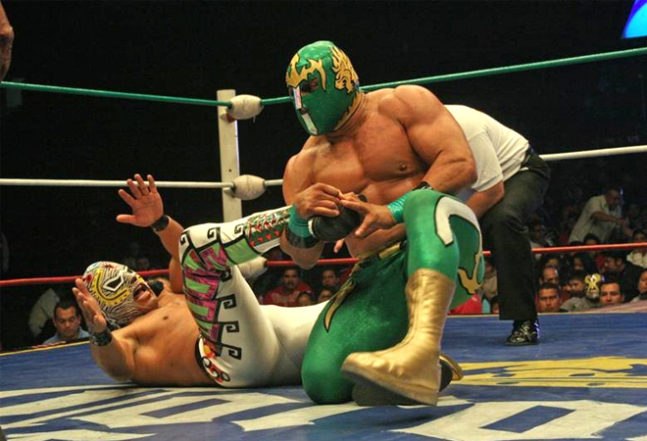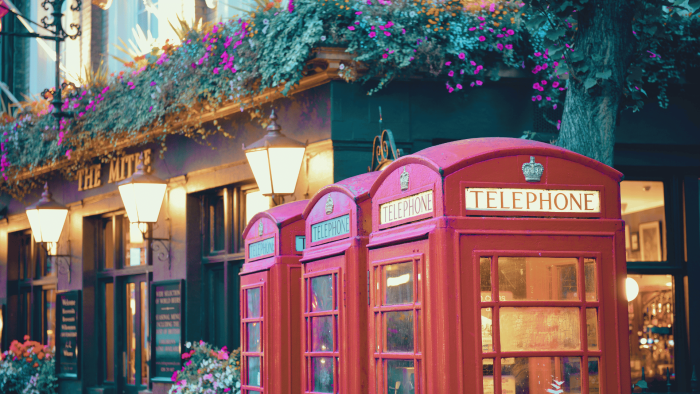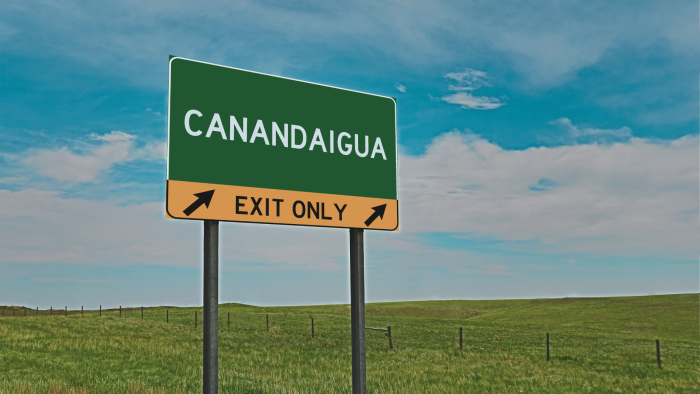When we think of Mexican culture, there are a ton of things that come to mind. Of them, however, one of the most intriguing—and revered—is Mexican wrestling, also known as “Lucha Libre.”
We’ve wanted to experience the thrill of a Lucha Libre match for years. Well, a couple weeks ago, while in CDMX celebrating Mexican Independence Day with the folks from Milagro Tequila, we finally got our shot.
And we weren’t there for just any Lucha Libre match, either. It just so happened that, on the night we rolled out to the Arena de Mexico (the official home of lucha libre since 1940), they were celebrating the sport’s 85th birthday.
To say it was a bucket list item is a severe understatement, and in the end, it lived up to every single expectation we had. And before any of you ask, you bet your asses we bought—and wore—our very own luchador masks.

First, What Is Lucha Libre?
While the precise history of the sport is debated, it’s believed that lucha libre dates back to the early 1860s, during the French Intervention, and was invented by a man named Enrique Ugartechea.
Ugartechea, being the first Mexican wrestler, styled it after the Greco-Roman wrestling that had also been popular in France and around Europe at the time.
For decades, Mexican wrestling was a regional sport observed mostly in and around Mexico City. But in 1933, a young Salvador Lutteroth, who would become one of lucha libre’s most famous and influential promoters, founded the Empresa Mexicana de Lucha Libre, known today as the EMLL.
In its early days, Mexican wrestlers (called “luchadors”) could be likened to American vaudeville performers. They were entertainers who took their performances in the ring very seriously, paving the way for generations to come.
The famous luchador mask we all know and love came to be in 1942, when a silver-masked wrestler known to the world only as El Santo stepped into the ring for the first time. Fans quickly came to know and love the mysterious masked hero, and El Santo took his character and his image so seriously that for nearly half a century, not a single person ever saw him without his mask. He finally revealed himself to the world at the very end of his career, dying of a heart attack a week later.
Even then, El Santo was buried wearing his famous mask.
He became a folk hero of sorts, symbolizing justice and bravery for the common Mexican. In fact, to this day, most lucha libre rivalries and matches are battles of good and bad—técnicos y rudos. Técnicos representing the average working people of Mexico, and rudos being seen as the antagonists—politicians, drug dealers, thieves, etc.
Over time, lucha libre gained significance as a staple of culture and pride for the Mexican people, and not just a form of entertainment. Today, lucha libre is the second most popular form of entertainment in Mexico, behind soccer.

How Does it Compare to Professional Wrestling in the States?
By all measurable standards, performative wrestling didn’t hit North America until the 1920s, roughly 60 years after lucha libre started gaining traction in Mexico.
American pro-wrestling is a more brutish than lucha libre in that American wrestlers focus on “fighting,” where luchadors are traditionally more performative. They rely on dazzling and ornate moves, high-flying takedowns, and submissions that look more like contortionism than professional wrestling.
Luchadors are also known for their extravagant, colorful costumes and masks. Americans? Not so much. We’re looking at you, Stone Cold Steve Austin.

Fight Night at Arena de Mexico
Now that you’re mostly caught up, let’s get down to it: What was it like being able to witness a lucha libre match firsthand?
Magical.
But it’s important to emphasize that the match we got to see wasn’t just any old match. The anniversary shows are the most popular and heavily attended of the year, comparable to WrestleMania. It’s televised all over the country, and millions of people tune in to watch.
That, coupled with the fact that this match also fell on the weekend of Mexico’s Independence Day celebrations, ensured that it was an all-out party—not just in the stadium, but on the streets. For blocks in every direction, thousands of people in fan shirts, masks, and even full-on wrestling costumes packed the streets.
It was surprising to us, especially knowing Arena de Mexico’s capacity maxes out at a little over 22,000 seats.
After working our way through security and to our seats, it became obvious that what we were experiencing was way, way different than anything we could ever expect in the States.
Scheduled on the program were six matches for the evening, including three six-man tag team matches, a six-woman tag team match, another six-man tag team match for the CMLL World Trios Championship, and the most anticipated, a Lucha de Apuestas match involving Rush and Bárbaro Cavernario on one team, and Ring of Honor star Matt Taven and Volado Jr. on another.
The stakes of a Lucha de Apuestas match are much higher than a regular lucha libre match, because the match usually results in the loss of a wrestler’s mask or hair—two of the biggest and most costly disgraces. Each wrestler makes a public bet in the lead up to the match, and whoever loses has to “pay up.” Things get particularly interesting in a mask vs. mask match, because if a losing wrestler’s identity was previously unknown, it’s customary for him to not only reveal his face, but also his real name, hometown, and years as a professional after his mask is torn off. It gets very intimate.
Our match ended with Taven betraying Volado Jr. in the middle of the third fall, after accusing Volado Jr. of purposefully injuring his arm. This betrayal cost them the match and, in the end, their hair—which was shaved off live in front of the 20,000 fans in the arena.
We also got to see lucha libre stars Los Lucha Bros (King Phoenix and Penta el 0M) team up with Diamanté Azul to beat Carístico, El Hilo de L.A. Park, and L.A. Park, in a high-flying, sensationally acrobatic card that had everyone in the arena on their feet.
From start to finish, the energy in the stadium was incredible. Take all the World Cup matches you’ve ever seen, all the football games you’ve ever been to, and all the concerts you’ve ever sweat through, and multiply it all times ten.
The intimate relationship between the wrestlers and the audience made it seem more like an interactive Broadway performance than a wrestling match. At different points throughout the evening, wrestlers were being thrown into the packed stands where fans booed and cheered accordingly. Looking on as Taven and Volado Jr. got their heads shaved, and how the crowd reacted with cheering and terrified boos… it was almost a sensory experience. We weren’t just witnessing something; we were a part of the action.
Even the snacks were next-level. Nachos? Pretzels? Hot dogs? Ha!
Try pre-microwaved cups of Nissin Cup Noodles, delivered direct to you in the stands. Popcorn topped with chili sauce. Entire bags of Doritos with a side of chipotle sauce—dumped straight into the bag. Micheladas on tap, served to you before you could even finish your last one.
All the stops were pulled out for this night, and it showed. After every performance, the sound of music flooded the stadium and dancers emerged from all directions, shaking and shimmying and smiling and laughing, while the people in the stands got up and danced.
By the end of it, we knew why lucha libre is so important to Mexican people. It wasn’t just a show or an event. It was a party. A celebration of tradition. The best part was that it never felt contrived. It might have been scripted, but everything that happened was genuine.




